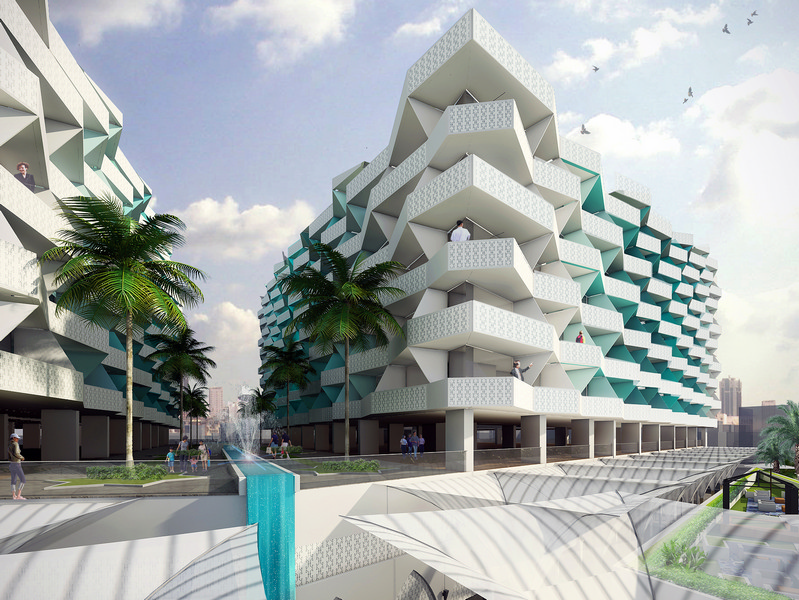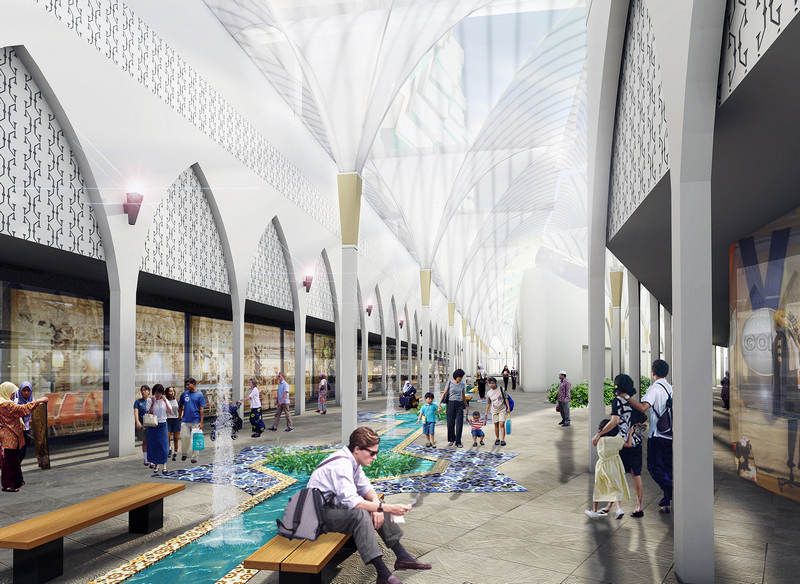An early morning flight to Kuala Lumpur yesterday morning was not exactly what I had in mind. The past couple of weeks have been hectic to say the least, with design deadlines, business inquiries, filming the last episode of my TV series (“City Time Traveller”), and couple of public lectures to coincide with a book signing of my latest book.
 But here I am, in Kuala Lumpur, and staying at the Majestic Hotel – an icon restored to all of its colonial splendour and glory, and a welcome retreat from the heat (and haze) of recent weeks. This is a place I like to stay when I’m in KL for meetings and solitude for writing (I feel that until I exorcise the writing demons, such projects will be the albatross hanging around my neck, like the ancient mariner’s as per Coleridge’s famed romantic poem). The colonial wing is furnished with a keen attention to detail that never wanders into pastiche, and has enough period detail to provide a waft of nostalgia. A quartet chimes 30’s tunes, and white jacketed waiters / waitresses saunter through the public spaces with efficiency and grace, thus transporting one into a scene reminiscent of F Scott Fitzgerald’s ‘The Great Gatsby’.
But here I am, in Kuala Lumpur, and staying at the Majestic Hotel – an icon restored to all of its colonial splendour and glory, and a welcome retreat from the heat (and haze) of recent weeks. This is a place I like to stay when I’m in KL for meetings and solitude for writing (I feel that until I exorcise the writing demons, such projects will be the albatross hanging around my neck, like the ancient mariner’s as per Coleridge’s famed romantic poem). The colonial wing is furnished with a keen attention to detail that never wanders into pastiche, and has enough period detail to provide a waft of nostalgia. A quartet chimes 30’s tunes, and white jacketed waiters / waitresses saunter through the public spaces with efficiency and grace, thus transporting one into a scene reminiscent of F Scott Fitzgerald’s ‘The Great Gatsby’.
 It is refreshing that such bastions of tradition, whether in the architecture, the clothing, the music or the gastronomic offerings, still exist and serve as a reminder of cultural heritage; and like it or not, of a colonial past with its distinct socio-cultural influences. Cultural identity, and particularly that of a people and the environment in which they inhabit, is increasingly becoming challenged through globalization and urbanisation.
It is refreshing that such bastions of tradition, whether in the architecture, the clothing, the music or the gastronomic offerings, still exist and serve as a reminder of cultural heritage; and like it or not, of a colonial past with its distinct socio-cultural influences. Cultural identity, and particularly that of a people and the environment in which they inhabit, is increasingly becoming challenged through globalization and urbanisation.
 Technology has helped bring people together and promoted the cross fertilisation of cultures, ideas and ideals; but it has also contributed to a transcendence of modern consumer culture that arguably destroys the sense of heritage and cultural identity of a people. Spaces, which were once imprinted with the cultural practices, beliefs and the traditions of a local people, are also being removed through continued urbanization. This furthermore compromises the cultural identity of a place. A cultural sustainability that seeks to preserve traditional social and spatial practices, potentially safeguards against the imposition of a modern built environment that lacks cultural relevance. Restoration projects such as the Majestic Hotel serve as healthy reminders for today and tomorrow’s society as to how it used to be, and in this particular case provide a new lease of life for what was a decaying structure.
Technology has helped bring people together and promoted the cross fertilisation of cultures, ideas and ideals; but it has also contributed to a transcendence of modern consumer culture that arguably destroys the sense of heritage and cultural identity of a people. Spaces, which were once imprinted with the cultural practices, beliefs and the traditions of a local people, are also being removed through continued urbanization. This furthermore compromises the cultural identity of a place. A cultural sustainability that seeks to preserve traditional social and spatial practices, potentially safeguards against the imposition of a modern built environment that lacks cultural relevance. Restoration projects such as the Majestic Hotel serve as healthy reminders for today and tomorrow’s society as to how it used to be, and in this particular case provide a new lease of life for what was a decaying structure.
But what of the new? Before sustainability became an appendage to words and sentences (sustainable design, sustainable engineering, sustainable whateverthehellyouwant), we had critical regionalism – a term coined by the academic Kenneth Frampton which does exactly what it says on the tin – it allows the proponent to be critical of a place’s climate, culture, social practices, materials and technologies; and execute them in compositions that allude to the essence of a region’s built environment without venturing into Disneyfied pastiche. The works of Hassan Fathy spring to mind. The studio appreciates this line of critical thinking, allowing a combination of an academic rigour with a creative vigour to forge culturally sensitive projects.
Most recently, we designed a mixed-use development in Penang for the Muslim community that necessitated a particular Islamic sensibility, given the relationship to an existing mosque. In terms of the development’s socio – economics, the scheme evokes flavours of souks and bazaars that similarly correlate to the Malay ‘mamak stall’ culture, whilst embracing a multitude of different functions that include a low and medium cost residential living, a small hotel and a religious school / community centre to outreach into the existing neighbourhood. Spatially, a reinterpretation of the traditional Malay serambi, or terraces, provided opportunities for outdoor social space often adopted by the Malay community, as well as a means for shading the façades.
This in turn served the environmental purposes of passive design that optimized natural light and ventilation to percolate into the buildings. Then it was tested by quantitative building physics modelling. Modular construction has been proposed throughout, with the rigours of a grid allowing a 90 per cent ratio of modular building components to special parts – facilitating a 50 per cent enhancement in the speed of construction, and the minimization of wet trades.
But what of the physical expression of a culture to support the essence of a culture? The Islamic 4 fold garden, or Chahar Bargh; and the internal structures of domes, or Muqarnas, created an opportunity for its reinterpretation into the greenery, water, shade and geometry that is prevalent in the local culture.
This manifested in the faceted façades, the terraces, and the open courtyard spaces punctuated by the very elements found in traditional Islamic environments, albeit expressed as modern reinterpretations. This was similarly expressed through a branding exercise that phoenetisised the word Chahar Bargh to Jahabah to create a more easily pronounceable name for the development that was similarly used to create a tessellating geometry for the mashrabiya screens that would help filter light yet provide shade. Ultimately, the project seeks to demonstrate that cultural sustainability transcends scale, discipline and sector. In order to ensure that we do not lose sight of our cultural heritage, it is perhaps through abstraction and reinterpretation that we may preserve character and identity of places for future generations, whilst maintaining the line of continuous development.
Jason Pomeroy, who holds a Professorship at Nottingham University, is a Singapore-based Eco Architect, Urban Planner and Academic. He is the founder of Pomeroy Studio, an international team of designers and thought leaders of sustainable built environments.
For more information visit www.pomeroystudio.sg.














